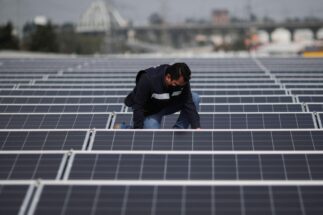Over the last few decades, Latin America has recorded significant, albeit volatile, economic growth, which has been accompanied by an increase in consumption and investment. However, this process has been insufficient to solve the problems of poverty and to reduce the very high concentration of income that prevails in several countries in the region.
Latin America has been acknowledged for its economic dynamism – an economy’s capacity to adapt to changing circumstances – though this has also been associated with the generation of a complex range of negative externalities. This has led to significant negative side effects, such as high atmospheric pollution, contamination of soil and water resources, and greenhouse gas emissions that cause climate change.
This deterioration of environmental and climatic conditions represents a severe obstacle to long-term development. In some cases, the impacts of climate change are non-linear and appear to be irreversible, affecting the poorest and warmest countries most severely. Increasing environmental degradation is having significant and widespread effects on the economy as a whole, affecting social welfare in multiple ways and eroding the foundations of economic dynamism.
Against this backdrop, over the course of the next decades, Latin American countries will need to build a new style of development that is environmentally sustainable and provides solid economic dynamism. The magnitude of these challenges requires a new long-term development strategy and a broad mobilisation of resources to finance the required structural changes consistent with the challenge of climate change.
The current mode of development is associated with significant greenhouse gas emissions and the current efforts to mitigate these emissions are clearly insufficient. Maintaining current production and consumption patterns is thus incompatible with building a carbon-neutral economy by 2050–2070 – as is necessary to meet the Paris Agreement target of stabilising global temperature rise between 1.5C and 2C during this century.
Future modelling scenarios show that meeting the challenges of the climate transition will require much higher average annual rates of decarbonisation and improvements in energy efficiency than those that have been recorded in Latin America. These modelling exercises also illustrate that delaying the mitigation process until 2030 would only mean a much greater effort is required in the future, which would be less credible and more costly in economic terms.
The physical impacts of climate change are expected to lead to an increase in fiscal deficits in Latin America due to higher spending needed to deal with climate emergencies, and reduced revenues as a result of falling economic activity. This weakens economic health and may lead, in some countries, to an unsustainable increase in public debt.
Available estimates indicate that, depending on each country, the infrastructure investment projects required to support the climate transition in Latin America and the Caribbean involve mobilising an annual average of 5% of GDP in resources. These investments, which in themselves may represent a boost to the meagre economic growth that the region’s post-pandemic economies are showing, will imply an increase in public spending – which will be impossible to achieve without major changes in fiscal policy and without the mobilisation of larger amounts of financing.
The climate transition will also mean ending the production and consumption of fossil fuels, which means that in several countries in the region – Brazil, Ecuador, Bolivia, Mexico, Guyana, and Trinidad and Tobago, among others – there will be a significant reduction in government revenues.
Public finances should therefore be prepared to process an increase in spending and a reduction in tax revenues, preserving fiscal balances and taking greater advantage of the opportunities offered by new green, sustainable and gender-focused financial instruments and initiatives.
In this scenario, the implementation of a new fiscal and public debt management policy appears as a prerequisite for the successful convergence towards a carbon-neutral and climate-resilient economy. Indeed, the appropriate management of the risks of this climate transition appears as a necessary condition for meeting the targets set in the Paris Agreement, and for transformations in current production and consumption patterns, which are at the root of climate change.
It is unlikely that these challenges can be met without significant changes in the orientation of fiscal policy, and without the objectives of environmentally sustainable and socially inclusive development taking centre stage in public debt management. For example, despite the low responsiveness of demand for emissions-intensive goods and services to price changes, a carbon price could contribute to the climate transition and generate additional fiscal resources that could be applied to achieve a second dividend, in terms of improved income distribution and support for particularly vulnerable groups.
Moving in this direction requires a paradigm shift, harmonising the necessary public debt sustainability and preservation of macroeconomic stability with environmental and social sustainability. Otherwise, fiscal pressures and growing indebtedness will limit the ability of governments to support the climate transition, and countries of the region will not be able to take advantage of the new opportunities offered by building a socially inclusive and environmentally sustainable economy.
This article is based on the results of “Promoting a pandemic recovery: evidence to support managing the growing debt crisis”, a research project carried out by the South American Network of Applied Economics (Red Sur), with the support of the International Development Research Centre (IDRC-Canada)









